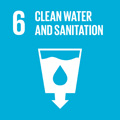- Docente: Laura Tositti
- Credits: 6
- SSD: CHIM/01
- Language: Italian
- Teaching Mode: Traditional lectures
- Campus: Bologna
- Corso: Second cycle degree programme (LM) in Chemistry (cod. 9072)
-
from Sep 24, 2024 to Jan 09, 2025
Learning outcomes
At the end of the course, the student will be aware of the concept of 'background levels' of natural chemical species, will recognize the compositional alterations detectable in the atmosphere as a result of natural cycles/emission sources as well as of human activities and understand the chemical basis of air pollution, climate change and their connections. Special emphasis will be given to the temporal fluctuations of atmospheric components and their reactivity based on the concept of atmospheric residence time, a parameter tightly connected with air quality as well as with climate issues. Greenhouse effect mechanism and its alterations will be explained in the light of atmospheric chemistry principles.
Course contents
The Earth as a biogeochemical reactor - Vertical structure of the atmosphere - Chemical composition of the atmosphere: compositional evolution from its origins to date - Primary and secondary pollutants - recent changes (trends and periodical fluctuations) and its links with human activities - Sources and sinks of trace gases - Atmospheric residence time: keys to atmospheric reactivity - electromagnetic spectrum of incoming and outgoing radiation : photochemical filters in the atmosphere - energy balance of the planet and the current imbalances - IR interactions and the greenhouse effect, global warming and the scientific evidence - The atmospheric reactor: photochemistry of the natural and polluted atmosphere - Oxidant capacity of the atmosphere - Production, properties and role of OH radical - daytime/nighttime chemistry - control of the accumulation of toxic (CO) and climate-active (CH4) species in the troposphere - photochemical oxidation of SO2, NOx, VOCs/Hydrocarbons - Good ozone and bad ozone - stratospheric ozone (ozone depletion - ozone hole) - Airborne particulate matter: metrics (PM10), size distribution, chemical composition- The role of photochemistry in the production of secondary aerosol
Traditional, criteria and emerging pollutants (including nanoparticles)
Analytical basis for a correct approach to environmental investigations
Readings/Bibliography
• Recent reviews and articles from scientific journals provide by th teacher
Consultation texts:
• Colin Baird , Michael Cann
CHIMICA AMBIENTALE, Terza edizione, 2013, (Zanichelli ed.) ISBN: 9788808170408*
• An Introduction to Environmental Chemistry Julian E. Andrews, Peter Brimblecombe, Tim D. Jickells, Peter S. Liss, Brian Reid - 2009 - 320 pp (Wiley ed.)
• Air Pollution: Measurement, Modelling and Mitigation, Abhishek Tiwary , Jeremy Colls Routledge, 2010 - 501 pages
Teaching methods
Frontal lessons and individual study
Assessment methods
The oral examination consists in the discussion three topics on the whole course program based on the four slide packages together with the literature filesprovided by the teacher
The final grade reflects the comprehensive exposure assessment of the candidate.
Teaching tools
Class lessons based upon PowerPoint slides
Office hours
See the website of Laura Tositti
SDGs




This teaching activity contributes to the achievement of the Sustainable Development Goals of the UN 2030 Agenda.
